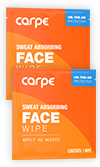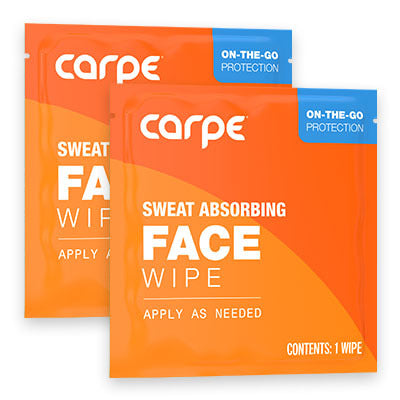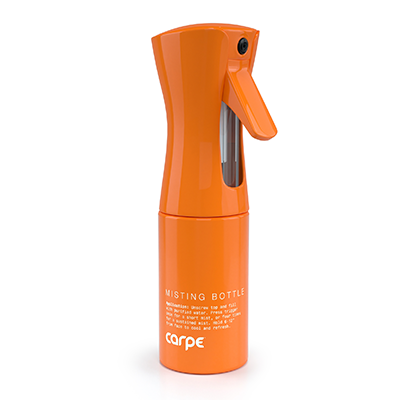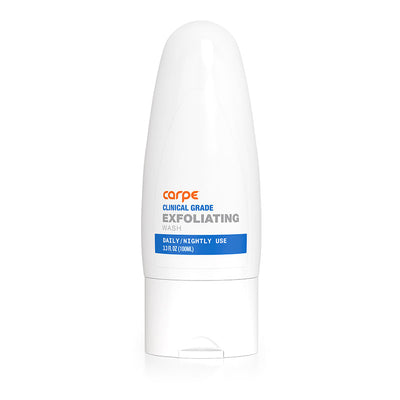Do you struggle with excessive facial sweat? You’re not alone! When someone sweats excessively from their face for no apparent reason it’s called craniofacial hyperhidrosis. This type of hyperhidrosis can cause the scalp, nose, chin, and cheeks to produce more sweat than they typically should.[1] Primary focal hyperhidrosis, a form of hyperhidrosis that has no apparent cause and affects people over a lifetime, is the most common reason that people develop excessive craniofacial sweating. About 3% of the population struggles with primary focal hyperhidrosis, and of those people, around one in five will develop symptoms of facial sweating.[4] That means that there are a lot of people with this problem! It also tends to affect men more frequently than women. Unfortunately, craniofacial hyperhidrosis can have a negative impact on a person’s quality of life if it’s left untreated.[4][1][4] For example, many women are unable to keep makeup on, and sufferers can become very self conscious about their appearance. Many with craniofacial hyperhidrosis go on to develop anxiety because the face is so integral to social interactions and excessive facial sweating leaves people feeling self conscious about one of their most prominent features. It’s a problem that needs to be taken seriously, and treated with respect. Luckily, there are treatments available that can lessen the burden of sweat, and reduce both a person’s sweating and anxiety.[1]
Causes
There are two main subtypes of hyperhidrosis that can cause excessive facial sweating: primary focal hyperhidrosis and secondary hyperhidrosis. It’s important that you know which type is causing your sweating because secondary hyperhidrosis is caused by specific underlying factors that can affect how your condition is treated.[1]
If your doctor determines that your craniofacial sweating is caused by primary hyperhidrosis then it means that your condition has no well understood cause. Doctors are unsure why, but primary focal hyperhidrosis causes eccrine (sweat) glands to be overactive. People with hyperhidrosis have sweat glands that look and function the same as normal sweat glands, but they produce much more sweat. It’s known that stress can cause sweating on the face and neck to worsen, as can heat. It’s also more likely to occur in men and typically begins in early adulthood.[1] While some triggers of facial sweating are understood the cause of primary focal hyperhidrosis is not.
If your doctor suspects that your craniofacial sweating is caused by secondary hyperhidrosis it means that there is an underlying problem causing you to sweat excessively. There are a host of conditions and diseases that cause secondary hyperhidrosis which may be responsible for facial, scalp, and neck sweating. These can include anything from infections, endocrine disorders, ,the use of some medications, and even very serious issues like cancers.[1] If you have secondary hyperhidrosis, don’t panic. In most cases your doctor can treat the underlying problem so that your symptoms improve. Even if it sounds scary, receiving the medical treatment you need is in your best interest. The most common cause of secondary hyperhidrosis is a medication side effect, so make sure you inform your doctor about all the medications and supplements you are currently taking[5]
Many people find that their facial sweating is worse during times of high anxiety.[3] Often those who experience craniofacial sweating also suffer from stress sweating. If this is the case, then measures to reduce anxiety may also help to reduce the amount of sweating you experience. However, it’s important to understand that hyperhidrosis is not typically caused by an anxiety disorder. Therefore, treatment of hyperhidrosis along with stress reduction techniques will be the most effective to minimize symptoms.
Treatments
The type of treatment each patient requires depends on the cause of their craniofacial sweating. For those with primary hyperhidrosis, the goal is to reduce facial sweating and manage their symptoms via treatment. If a patient has craniofacial sweating caused by secondary hyperhidrosis, then the goal is to eliminate the underlying issue, or to manage symptoms if the causative agent can’t be reversed.
Antiperspirants, Creams, and Oral Medications
The first line of treatment when attempting to stop facial sweating is to use topical antiperspirant creams. There are over-the-counter topical creams for hyperhidrosis that contain aluminum chloride, a substance that reduces the amount of sweat eccrine glands produce. If this does not work then patients can move on to the use of a prescription topical cream that contains an anticholinergic, usually glycopyrrolate. According to the most recent research 2% glycopyrrolate cream seems to be an effective treatment for excessive facial sweating.[4]
If topical creams do not work then doctors often move on to a type of oral medication called an anticholinergic. This type of medication works on the entire body to reduce sweat production by interfering with the binding ability of a neurotransmitter called acetylcholine. There are not many studies on the efficacy of this treatment specifically for craniofacial hyperhidrosis. However, the studies that do exist show that oral medication does tend to help, but can come with side effects. The main side effect that bothered patients in the studies available was dry mouth, although others can occur[4]
Botox
Botox injections are a third line treatment for craniofacial hyperhidrosis. This means that they are used after topical therapies and oral medications have failed to help someone. Botox injections are used for the treatment of axillary hyperhidrosis most frequently, but they are used for facial sweating on occasion. However, there is no current consensus on the amount and type of botulinum toxin that should be used. Issues can also occur regarding aesthetic concerns due to Botox injections causing facial asymmetry and brow ptosis (drooping).[2] When Botox injections have been studied for the treatment of craniofacial hyperhidrosis Botulinum toxin A was used and it was shown to be a relatively safe and effective treatment. More studies need to be performed to demonstrate the safety and effectiveness of this treatment over time, and in a larger group of people.[1]
Endoscopic Thoracic Sympathectomy
This is a type of surgery in which the nerves of the sympathetic ganglia are disconnected from eccrine sweat glands. The sympathetic ganglia is the part of the nervous system that connects to sweat glands to the rest of the nervous system and which is responsible for the flight or fight response. When these nerves are disconnected it prevents the body from being able to sweat in a particular area of the body because it can no longer communicate with the sweat glands in that location. This is a viable treatment option for those suffering from craniofacial hyperhidrosis. Usually, to get rid of sweating on the head and neck, a surgeon will have to work on the T2 or T3 area of the spine. The nerves can be blocked by various means including clipping, transection, ablation and clamping.[4] While ETS is very effective at stopping excessive sweating of the face, it can come with some serious side effects. ETS comes with a potential complication called compensatory sweating, in which the body sweats excessively in areas the surgery was not performed on. Compensatory sweating can be so distressing that some patients decide to have the surgery reversed. There is a type of surgery called a needlescopic thoracic sympathetic block which essentially does the same thing as ETS but the nerves are just clipped. This way, if a patient experiences compensatory sweating, the procedure can more easily be reversed.[3] Surgery should be reserved as a last resort for severe cases of craniofacial hyperhidrosis.
Excessive facial sweating can be an extremely burdensome form of hyperhidrosis. The good thing is that new treatments are being developed each year and many effective treatments are already available. If you are struggling with this, then please, don’t give up! Keep trying treatments to see what works for you - there is hope!
Sources
- Craniofacial hyperhidrosis can usually be managed pharmacologically, but surgery may sometimes be needed. (2016). . Drugs & Therapy Perspectives, 32(5), 191-194. doi:10.1007/s40267-016-0282-9
- Huddle, J. R. (2014). Hyperhidrosis: Causes, Treatment Options and Outcomes. New York, NY: Nova Science.
- Lin, T. S., & Chou, M. C. (2002). Needlescopic thoracic sympathetic block by clipping for craniofacial hyperhidrosis. . Surgical Endoscopy, 16(7). doi:10.1007/s00464-001-8231-6
- Nicholas, R., Quddus, A., & Baker, D. M. (2015). Treatment of Primary Craniofacial Hyperhidrosis: A Systematic Review. American Journal of Clinical Dermatology, 16(5), 361-370. doi:10.1007/s40257-015-0136-6
- Pariser, D. M. (2014). Hyperhidrosis (4th ed., Vol. 32). Philadelphia, PA: Elsevier.




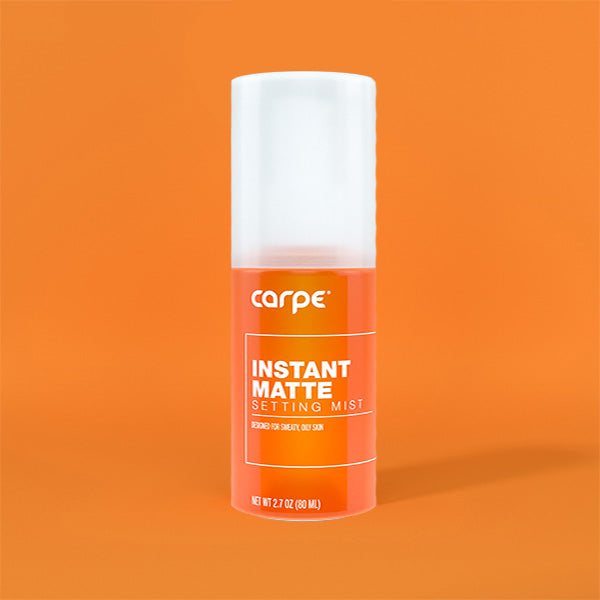

16790753702383.jpg?v=1679075372)

16790746985853.jpg?v=1679074700)


16790757289763.jpg?v=1679075731)





